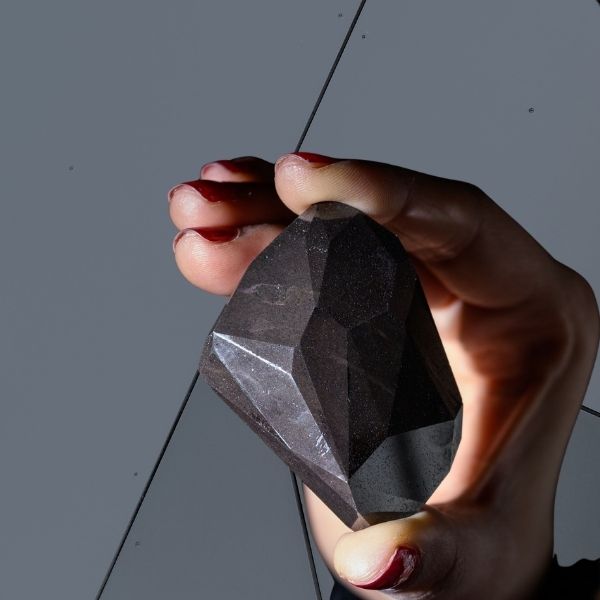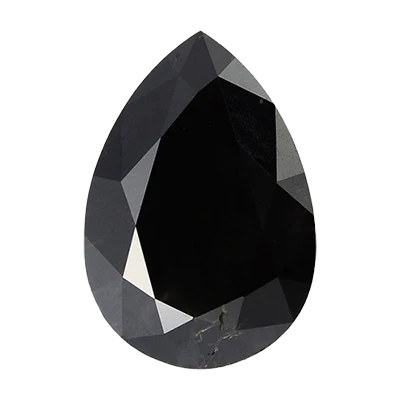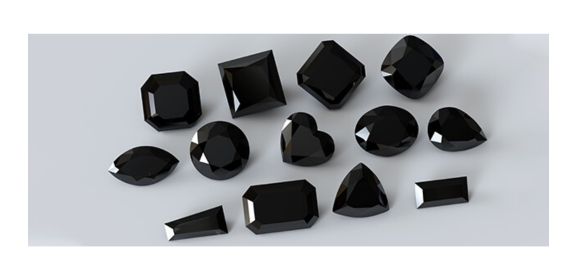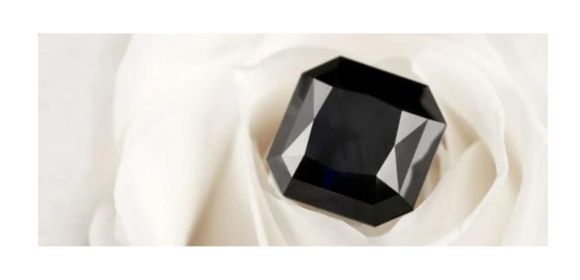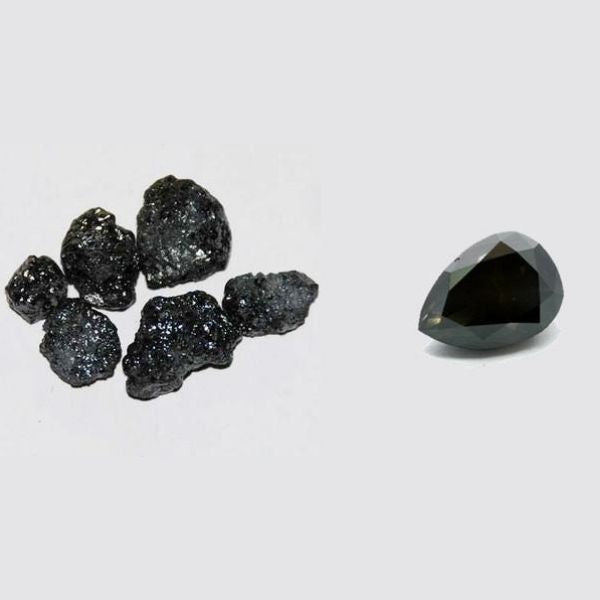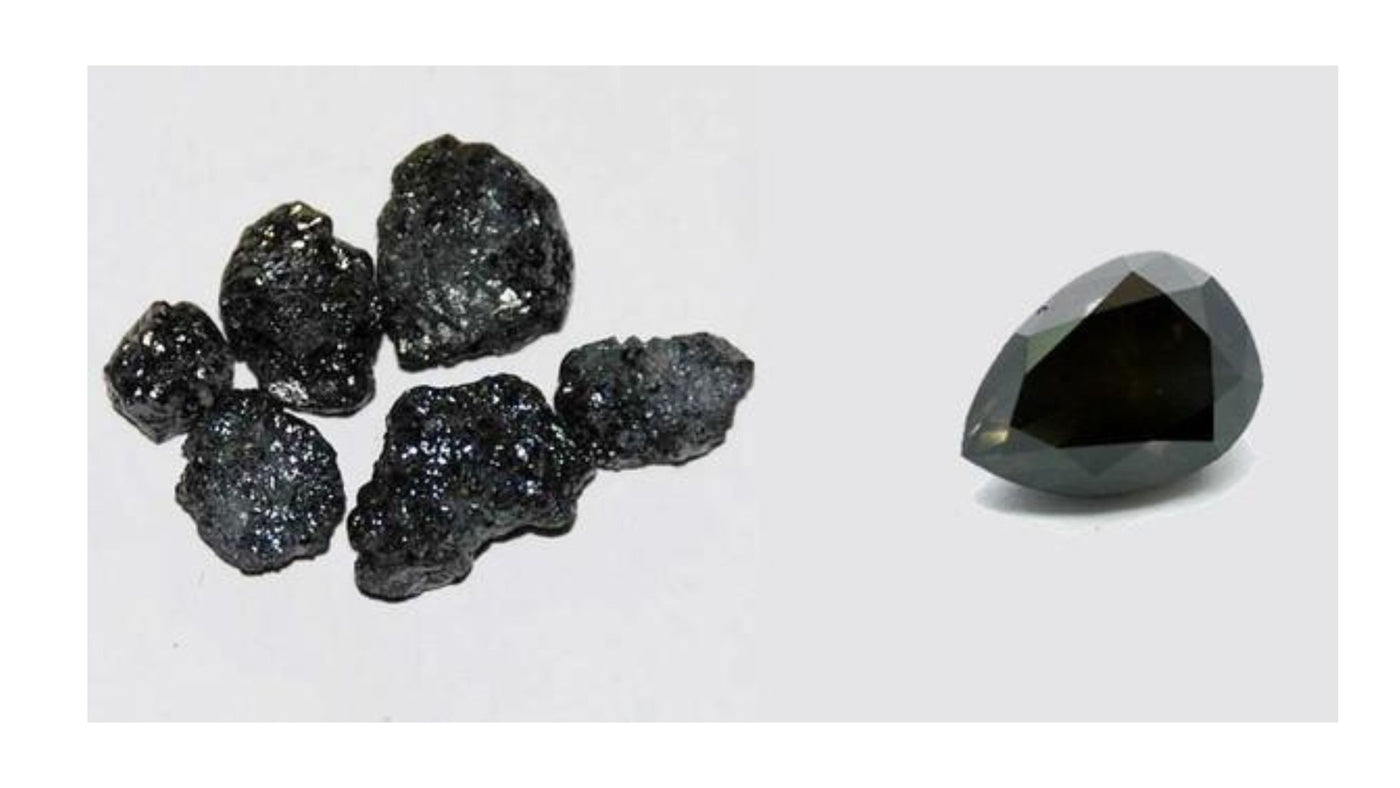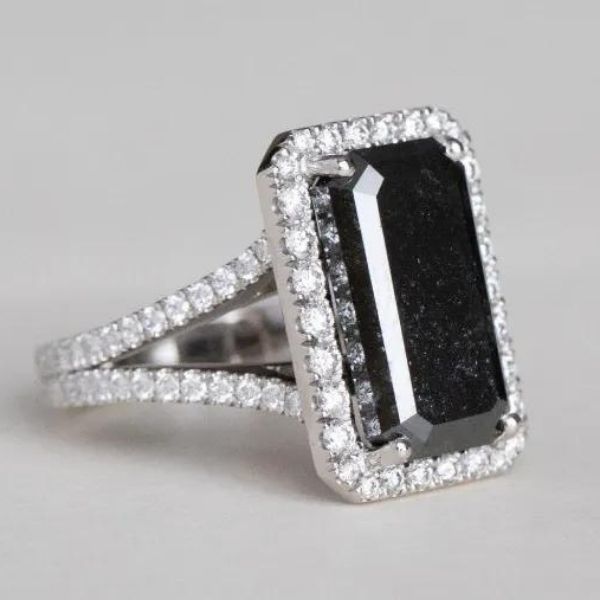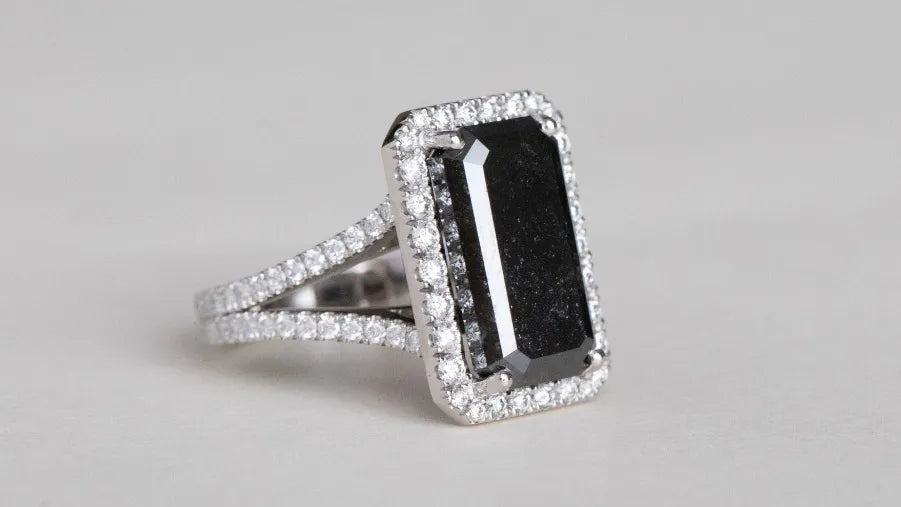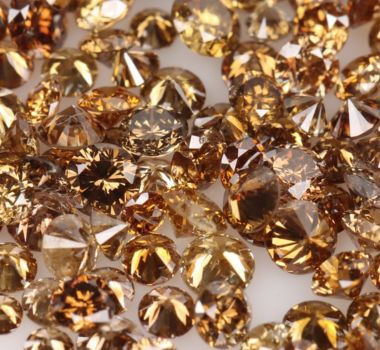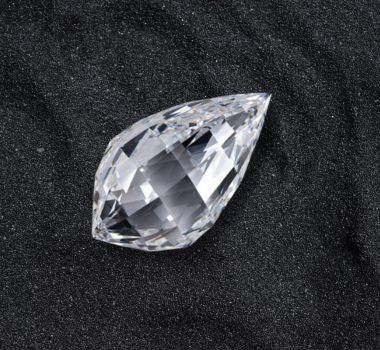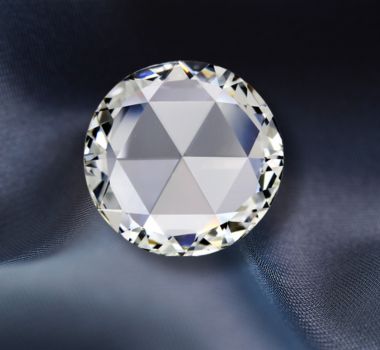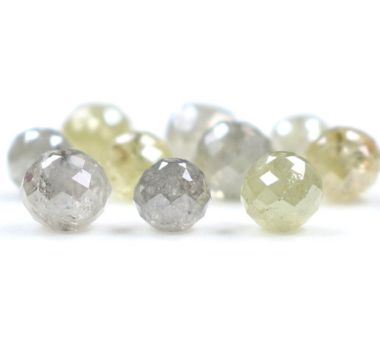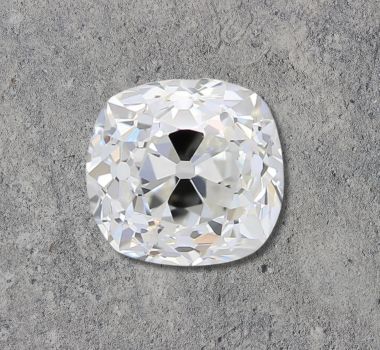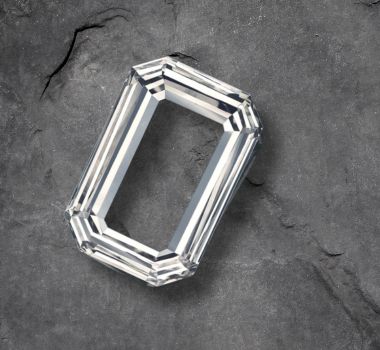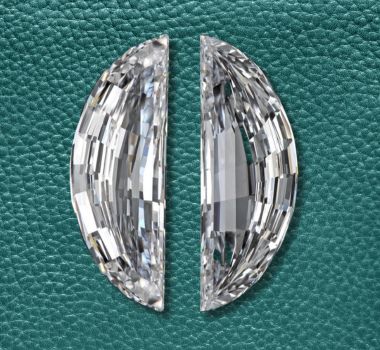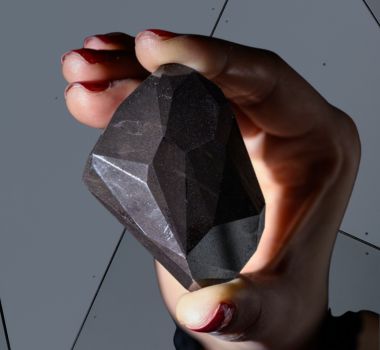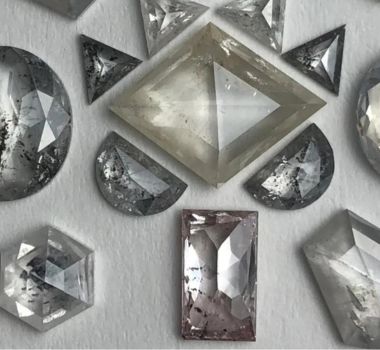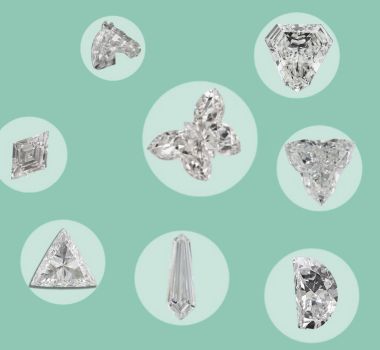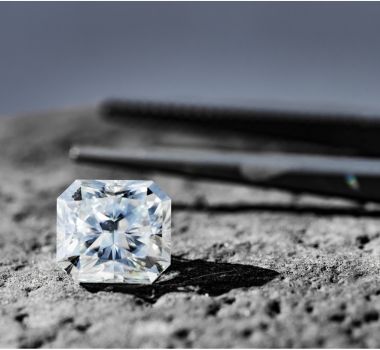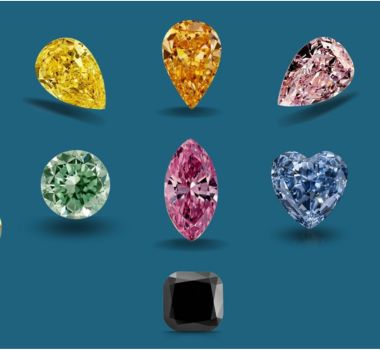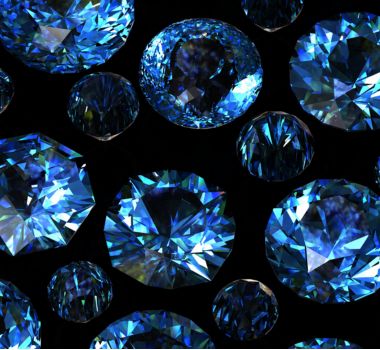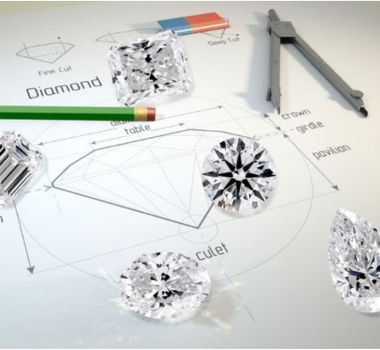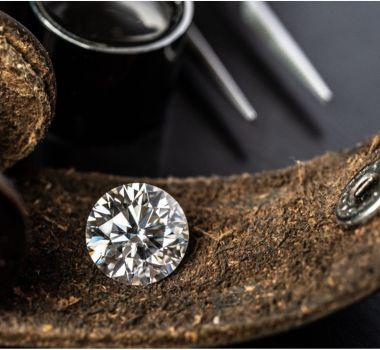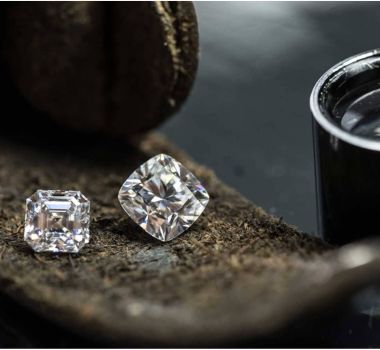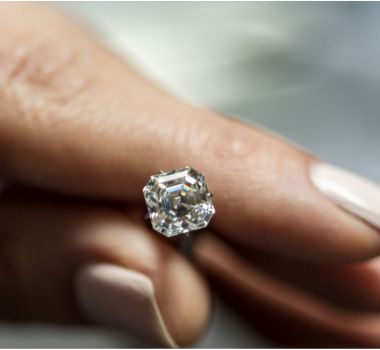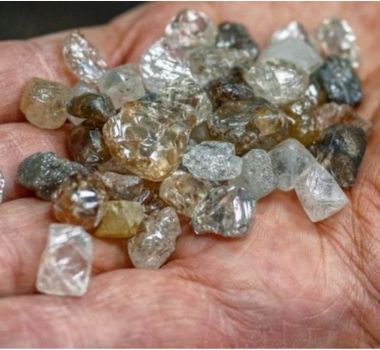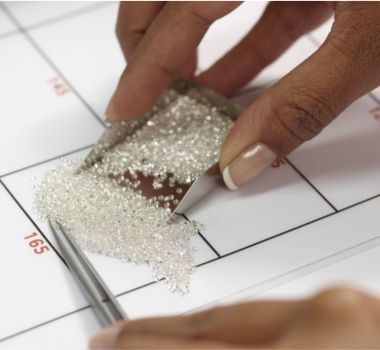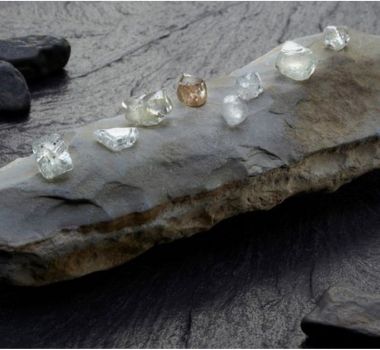
What are Black Diamonds?
Black diamonds stand out due to their abundant inclusions, unlike the subtle dark specks that might be present in a standard white or colorless diamond. When these inclusions reach exceptionally high levels, the diamond takes on a completely black appearance, rendering it a distinctive and uncommon type of colored diamond. In contrast to other fancy colored diamonds, which typically result from chemical impurities during the diamond's formation, black diamonds share greater similarities with white diamonds than with varieties like yellow or blue diamonds.
Their unique black color, exclusively exhibit the Fancy Black intensity, setting them apart from other colored diamonds. In contrast, only White and Red diamonds share this exclusivity in the Fancy intensity category. While Fancy White diamonds share the opaque characteristic with black diamonds, Red diamonds lack this attribute.
Unlike the color diversity found in other diamonds, which span from Faint to Fancy Deep/Dark intensities, black diamonds derive their distinct coloration from the inclusion of graphite and random clustering, as opposed to geological impurities like nitrogen, hydrogen, or boron that contribute to the coloration of other diamond varieties.
The Mystery of Black Diamonds
The allure surrounding black diamonds seems to stem from the enigma that envelops them. Contrary to widespread assumptions, genuine fancy black diamonds are exceptionally scarce. The predominant cause of the black color in most natural black diamonds can be attributed to numerous minuscule dark crystals or clusters of graphite, magnetite, hematite, or native iron.
The Gemological Institute of America (GIA) differentiates between gem-quality black diamonds and carbonados, a polycrystalline diamond substance characterized by randomly oriented cuboidal microcrystals, typically presenting as black, gray, or brown.
Origin of Black Diamond’s Color
The coloration of black diamonds is attributed to the presence of graphite. These diamonds exhibit a high number of inclusions, tiny imperfections that impact the gemstone's visual appeal. This abundance of inclusions is sufficient to alter the color of black diamonds when utilized in jewelry. A black diamond is essentially saturated with inclusions, giving the entire stone a black hue that imparts a gem-like appearance.
While diamonds, in general, are renowned for their durability, scoring a perfect 10 on the Mohs scale of mineral hardness, their structure is typically a solid crystal with discernible natural lines. In contrast, black diamonds differ slightly, comprising numerous small crystals fused together in a random formation.
Despite still receiving a 10 on the Mohs scale, black diamonds are reputed to be even harder than the majority of colorless diamonds. Before being employed as gemstones in jewelry, black diamonds found use in various applications due to their durability.
Are Black Diamonds Rare and Expensive?
When dealing with black diamonds, it is crucial to discern between naturally occurring stones and those treated to attain a black color. The former holds significantly higher rarity and value compared to the latter. Unfortunately, the widespread practice of treating diamonds makes it challenging to distinguish between a natural black diamond and one altered to change its color. Natural fancy black diamonds are indeed rarer than common colorless diamonds.
In the market, there are two types of black diamonds: those naturally black during formation and those enhanced (burned) to exhibit a black color. Although not the rarest color in nature, black diamonds are highly prized for their artistic beauty and dark allure, often incorporated into Men’s jewelry for a masculine touch.
Natural black diamonds are generally affordable, contingent on the desired size. In contrast, heated black diamonds are less expensive, but their demand is low as most prefer authenticity. When seeking black diamonds, be cautious of stones with unusually low prices, as they likely have undergone color treatment. Even a report stating a “natural diamond” doesn’t guarantee it's a natural fancy black diamond; it might refer to a natural diamond treated to acquire a black color.
